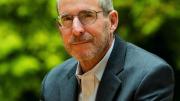The University has entered a new phase of engagement with the global climate-change problem, as the Salata Institute for Climate and Sustainability funded its first substantial grants to five interdisciplinary, cross-school research clusters. The faculty-led groups, announced February 13, will each receive up to $600,000 in annual funding, renewable for up to three years. “We’re very excited,” said vice provost James Stock, director of the institute, which was founded with a $200-million gift from Melanie and Jean Salata announced in June 2022. “We’re seeing faculty members who are interested in having real-world impact, working with colleagues from across the University in ways that they heretofore have not. That’s an important step in the right direction [and is] one of the things that the President’s Climate Initiative was designed to do.”
The five groups, each representing at least two schools and spanning multiple disciplines, were selected from among 41 initial submissions focused on applied research that will yield “concrete proposal[s] to address an aspect of the climate crisis,” according to the vice provost’s website, by focusing on “climate problems that are narrow enough to ensure that concrete solutions emerge but broad enough that the solutions represent significant progress in meeting the world’s climate challenge.”
“This is not about writing papers and publishing them in journals,” said Stock, who is also Burbank professor of political economy and a professor of public policy. “Harvard professors are good at that. This is about taking all of that brain power to the next step and working with [external] collaborators who are deeply engaged in real-world implementation.”
The initial research clusters, which will receive more than $8 million in total funding, address adaptation to climate change, reduction in greenhouse gas emissions, and policies to help enterprises and affected communities transition to new forms of energy and new climate standards. They focus on:
Building resilience in South Asia. In a region representing more than one-fifth of the world’s population, the group will attempt to devise scalable interventions aimed at building community resilience to climate threats such as increased flooding, sea-level rise, and shifts in disease impacts (including malaria).
Reducing global methane emissions. Methane is a more potent greenhouse gas than carbon dioxide but has a much shorter atmospheric life span. Controlling methane emissions could reduce global warming in the short term, buying humanity time for the development of solutions to warming caused by carbon dioxide.
Preparing for the impacts of changes to the energy system. What happens to coal-mining towns in West Virginia and Pennsylvania? How do communities respond to the arrival of wind and solar installations or to expansions of the local electrical grid? This cluster will focus on helping them adapt by engaging in discussion of residents’ values in order to make optimal trade-offs during the energy transition.
Responding to sea-level rise in the Gulf of Guinea. This group will explore strategies to adapt to coastal erosion in three African cities: Abidjan, Accra, and Lagos. Using projections of sea-level rise through 2100, the team will explore options ranging from coastal defenses, to construction of infrastructure resilient to flooding, to voluntary resettlement of vulnerable populations.
Evaluating net-zero pledges. Do pledges by corporations to reduce emissions lead to real results? This cluster will develop tools and methodologies to assess this question and then define strategies and regulations that will help to ensure that corporate pledges are meaningful, verifiable, accountable, and support the energy transition.
Each of the five projects is led by a principal investigator, but in interviews, those PIs emphasized the broad, collaborative nature of their research teams. And the breadth of expertise among their co-principal investigators imparts a sense of the extensive and ambitious scope of the projects. For instance, Meyer professor of energy and economic development Robert Stavins, who leads the work on methane emissions, noted that the group includes 17 participating faculty members from four departments in the Faculty of Arts and Sciences—Earth and planetary science, economics, government, and history—and five professional schools, including business, engineering, government, law, and public health. “That breadth of expertise of people working together is somewhat unparalleled,” he said. “And it can be extremely valuable. My job is to ensure that the faculty communicate and collaborate.”
But the work is not just about communicating, he stressed: “It’s about affecting each other’s research on curbing methane emissions so that the whole is greater than the sum of its parts.”
Read a detailed report on each project at harvardmag.com/cluster-research-23.









